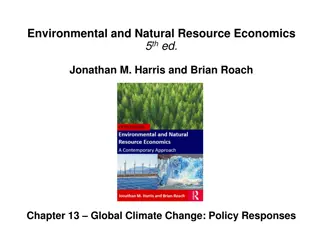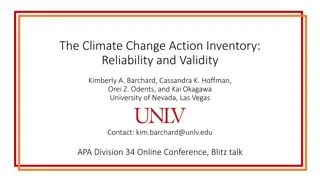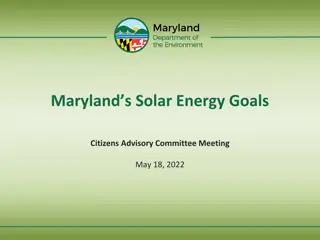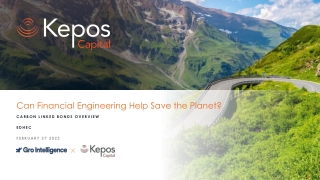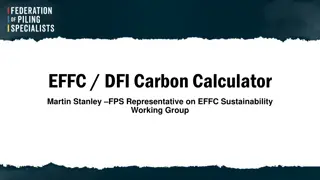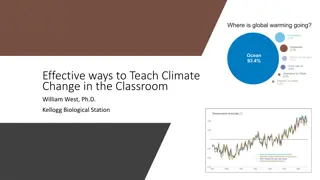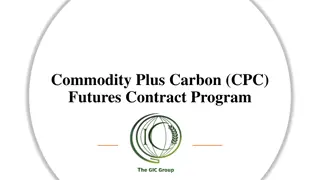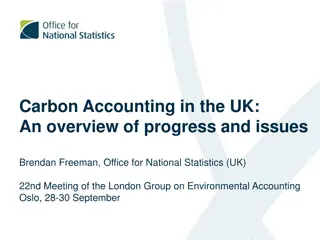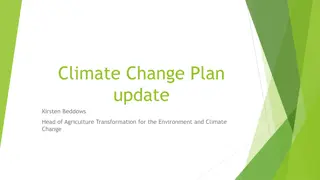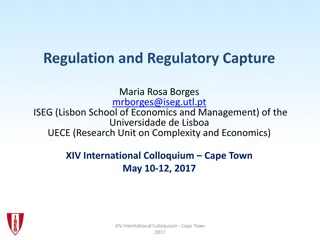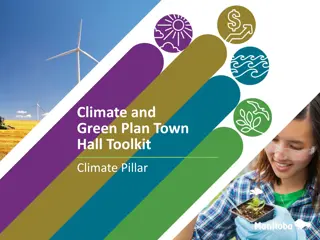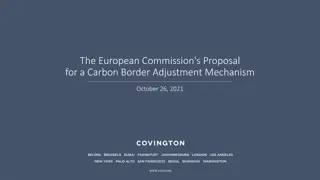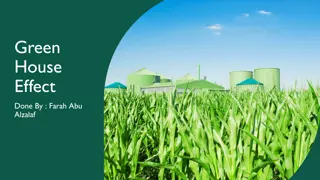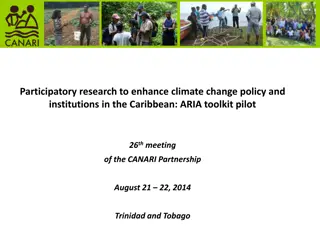Understanding Carbon Capture Solutions for Combatting Climate Change
Delve into the world of carbon capture and sequestration (CCS) as a pivotal technology in achieving carbon-free electricity generation goals by 2045. Explore the importance of natural and technological CCS options, alongside solutions such as energy efficiency, renewable energy, and more, to address the urgent need for reducing CO2 emissions and mitigating climate change impacts.
Download Presentation

Please find below an Image/Link to download the presentation.
The content on the website is provided AS IS for your information and personal use only. It may not be sold, licensed, or shared on other websites without obtaining consent from the author. Download presentation by click this link. If you encounter any issues during the download, it is possible that the publisher has removed the file from their server.
E N D
Presentation Transcript
Hosted by the Virginia Academy of Science, Engineering & Medicine
Tara Illgner UVA Graduate Student studying: Atmospheric Chemistry and Science Policy Seeking Carbon Capture and Sequestration options for urgent implementation
Summer Experience with JCOTS VCDPA Working Group Meetings VASEM Coastal Flooding Report Child Protection Online Carbon Capture Options for VA
Meeting the Goals of the Virginia Clean Economy Act Using Carbon Capture Prepared by Tara Illgner COVES 2021 Fellow for JCOTS Presented September 13, 2021
Introduction VCEA goal is 100% carbon-free electricity generation by 2045 Carbon Capture and Sequestration (CCS) is pivotal to this goal In Feb, 2020: SB1374 established a Carbon Sequestration Task Force - Focuses exclusively on Natural Options, which are very important Issue Brief discusses Natural and Technological CCS options
Background Climate change is being caused by the emission of carbon dioxide (CO2) from burning fossil fuels CO2 and other Greenhouse Gases form a heat-trapping layer like a car windshield on a sunny day Before fossil-fuel burning became the norm, the atmospheric CO2 concentration was 270 ppm Now CO2 concentrations are over 400 ppm, and on track to increase quickly
Solutions to Reduce CO2 Emissions: Energy Efficiency, for reducedCO2 emissions -Appliances, light bulbs Renewable Energy, for zeroCO2 emissions Wind, Solar Carbon Capture, for reducedor zero emissions
Carbon Capture Options Chart displays two distinct categories of CO2 reduction solutions: renewables and carbon capture. Each category is further broken down into various methods and technologies.
Carbon Capture Tech in Virginia Case (PUE-2007-00068) brought before the SCC in 2007 Appalachian Power Company sought a rate adjustment To accommodate a planned Pre-Combustion power facility in WV This was the only known case of CCS Technology attempted in VA
Carbon Capture in Other States Data is sparse The Global CCS (GCCS) Institute is the only known reliable source The GCCS 2020 report shows strong growth of CCS facilities around the globe As of 2021 there are 65 CCS facilities worldwide at various stages of development 26 are operational 38 of those are in the US
Cost Comparison Di Lorenzo, Giuseppina. "Pre combustion carbon capture technologies for power generation: an engineering economic assessment." International Journal of Energy Research. March 11, 2013. Wiley Online Library, p. 1. "Improvement in Power Generation with Post-Combustion Capture of CO2." ieaghg.org, p. 4. Conca, James. "Net Zero Natural Gas Plant -- The Game Changer." July 31, 2019.Forbes.com.
Conclusion I recommend that all CCS options be explored to meet the goals set by the VCEA of 100% carbon-free electric generation by 2045 Recent new technologies, like DAC and the Allam-Fetvedt Cycle can accelerate achieving Virginia s carbon-reduction goals Carbon Capture technologies capture CO2 from industrial processes rather than emitting it to the atmosphere This captured CO2 can then be reused for power generation as a renewable resource or sold as a usable commodity to other industries a potential win-win
Thank you Grateful to members of JCOTS for your time today Grateful to Del. Hayes, David Barry, Hassan Abdelhalim, Lisa Wallmeyer, VASEM, UVA and others for supporting the COVES Fellowship Please feel free to contact me at tl9f@virginia.edu









